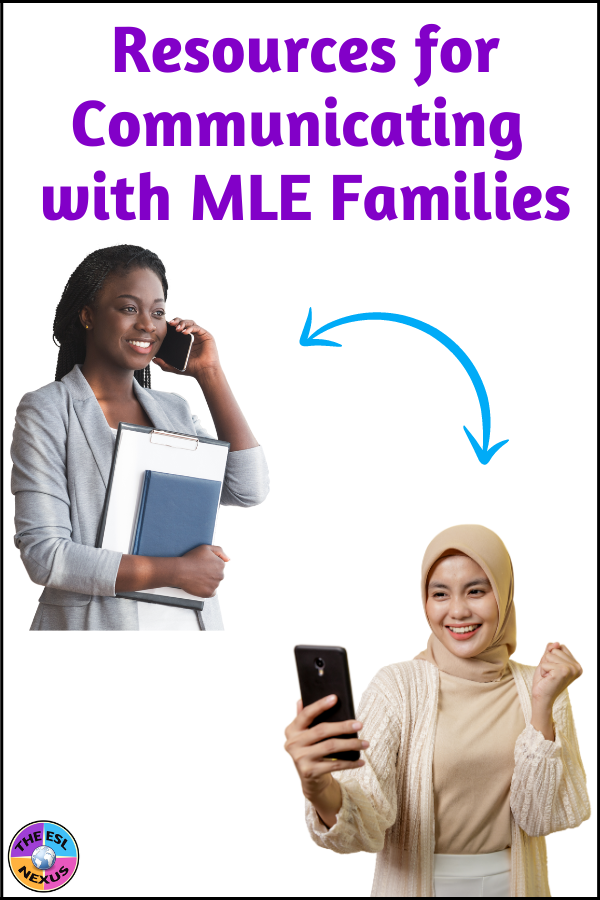Creating classroom assessments that fairly and appropriately evaluate what English Language Learners have learned about a subject is crucial. But when you’re teaching an academic subject, designing differentiated assessments for ELLs at various levels of language proficiency may seem very time-consuming. Although there is certainly some work involved when designing such tests, after the first time you’ll have a test bank you can adapt for future assessments.
This blog post is the first in a series in which I’m going to describe some ELL assessment strategies you can use when creating tests for academic subjects. I’ll also include examples of what you can do for different language proficiency levels for ELLs who are in mainstream classrooms. Here, I’ll talk about creating assessments for ELLs in a mainstream regular ed Language Arts class. I’ll discuss assessments for ELLs in Social Studies, Math, and Science classes in future blog posts.
 |
| Graphic created by The ESL Nexus |
Assessing Reading Comprehension
For Beginner ELLs:
* When teaching a novel to the whole class, let ELLs use a picture book or a graphic novel version of the book instead. If the book is available in the student’s native language, consider letting them read that; however, they should also be exposed to an English version so they can develop their English language skills.
* Identify target vocabulary words and write your own definitions of the words in simplified language and give copies to the students as they read the text; only use definitions of the words as they are used in the text so ELLs don’t get confused.
* To assess if the students understood the text, have ELLs draw pictures and/or write single words about the material to show they comprehended it.
* Create a timeline of events in the story and tell students to put them in the correct chronological order; you can do the same thing for cause and effect events.
* Write some simple sentences about the materials and ask ELLs to indicate if they are true or false.
* Decide what is most important to know about the novel and write up some questions using simplified language. Ask the ELLs the questions and have them answer orally; evaluate the content of the responses, not the accuracy of their grammar.
For Intermediate ELLs:
* When teaching a novel to the whole class, use a graphic novel or simplified version of the book instead. If an audio version is available, provide that to the students.
* Identify target vocabulary words and write your own definitions of the words in simplified language; define the words as they are used in the text and also provide 1-2 other meaning of words (it there are any) to help ELLs expand their vocabulary knowledge.
* To assess if the students understood the text, have ELLs write simple sentences about the material to show they comprehended it.
* Ask students to identify main ideas, discuss character development, and describe the plot; they can do this orally or by writing lists or simple paragraphs.
* Ask ELLs to answer multiple-choice questions about the text as well as write short responses to open-ended questions.
* Decide what is important to know about the novel and write up some questions that are a little more complex than those used for the Beginning level ELLs, then ask the students the questions and have them answer orally either face-to-face with you or by recording their answers on a device that you can listen to at a later time.
For Advanced ELLs:
* When teaching a novel to the whole class, use the actual book in tandem with an audio version if one is available. If no audio version is available, then partner the ELL with a native speaker and have them read the book together.
* Identify target vocabulary words and direct students to look up the words in a dictionary; if you have a dictionary aimed at ELLs, tell them to use that.
* To assess if the students understood the text, have ELLs write paragraphs about the material to show they comprehended it but minimize the amount of writing they must do since they will need more time to complete the task.
* Ask students to identify the plot and the theme, describe cause and effect relationships about events, and discuss in character development in greater detail.
* Give students open-ended questions about the text to answer.
* Give the same test to ELLs as the one you give to native speakers but do one or more of the following: eliminate some of the true/false and multiple-choice questions so the ELLs don’t have to process so much text, cross off 1-2 multiple-choice answers in those questions, rewrite instructions in simpler language so they’re easier to understand, allow ELLs to write less when responding to essay-type questions.
Assessing Vocabulary:
For Beginner ELLs:
* Find images that represent the target vocabulary words and put them on one side of a page or digital slide and put the actual vocab word on the other side; tell students to draw lines to match the words and pictures to each other.
* Alternatively, for each vocab word, put an image of it on an index card or piece of paper and on another card/paper, write the word. Have students match the images and words with each other. When they’re done, use your phone to take a photo of each student’s work so you can grade it later.
* Write simple sentences that use the target vocab words but instead of the actual words, put a blank line in the space where the words go; at the end of each sentence, put the correct word and another word inside parentheses and tell students to choose the correct word and write it on the blank lines.
For Intermediate ELLs:
* Put definitions of the target vocabulary words on one side of a page or digital slide and the actual words on the other side; tell students to draw lines to match the words and pictures to each other.
* Or, for each vocab word, write the word on 1 index card or piece of paper and the definition on another card/paper. Have students match the words and definitions with each other. When they’re done, use your phone to take a photo of each student’s work so you can grade it later.
* Write sentences that use the target vocab words but instead of the actual words, put a blank line in the space where the words go; put a word bank at the top of the page and tell students to select the correct words from the word bank for each sentence.
For Advanced ELLs:
* Put definitions of the target vocabulary words on one side of a page or digital slide, with a line next to each definition, and tell students to write the word that matches the definition on the line; at the top of the page or slide include a word bank to provide some extra support.
* Or, for each vocab word, write the word on 1 index card or piece of paper and the definition on another card/paper; or write the target vocab word on 1 card/paper and a synonym or antonym on another car/paper and tell the students to find the words that go together. (But make sure that you’ve also taught the synonyms and antonyms – don’t just expect ELLs to know those words.) Have students match the words and definitions with each other. When they’re done, use your phone to take a photo of each student’s work so you can grade it later.
* Give students a list of the target vocab words and tell them to choose a certain number (for example, if there are 10 words they can choose 6) and write sentences that use the words correctly.
Assessing Writing
For Beginner ELLs:
* For whatever topic you are teaching, tell the ELLs to make a list of the important words about that topic. For example, if you’re teaching about cause and effect, students could write those words and then some simple transition words that illustrate the concept.
* Tell students to draw a picture about the topic being taught. For example, when teaching figurative language, have the ELL draw a picture that represents an idiom or simile instead of giving a definition.
* Let students write in their native language in response to a prompt, then use a translation app to translate their work into English. Or ask another speaker of that language, who isn’t a student in the class (for privacy concerns), to translate the work for you.
* Create sentence starters about a topic that students can fill in with their own words.
For Intermediate ELLs:
* Have students write a paragraph about a topic using simple language structures. For example, if you’re teaching about cause and effect, they could write a paragraph that explains what it means and use an example to describe a specific instance.
* Create sentence frames than guide students in their writing. (Sentence frames differ from sentence starters in that the blanks can be anywhere in the sentence and can include more complex grammar features.) Use sentence frames when asking students to write a paragraph about a topic.
For Advanced ELLs:
* Give students the same writing assignment that native speakers get but allow the ELLs to write less; for example, they can write a 3-paragraph composition instead of a 5-paragraph essay.
* When teaching a particular type of writing, for example persuasive writing, write a model paragraph or a model essay so ELLs know what their writing they should include and look like.
Wrap Up
You can use these differentiated examples as templates and adapt them for your own Language Arts classes. When you design assessments for your Multilingual Learners of English, it’s essential to take into consideration their levels of language proficiency and then you can create assessments that measure their content knowledge, not their knowledge of English.




